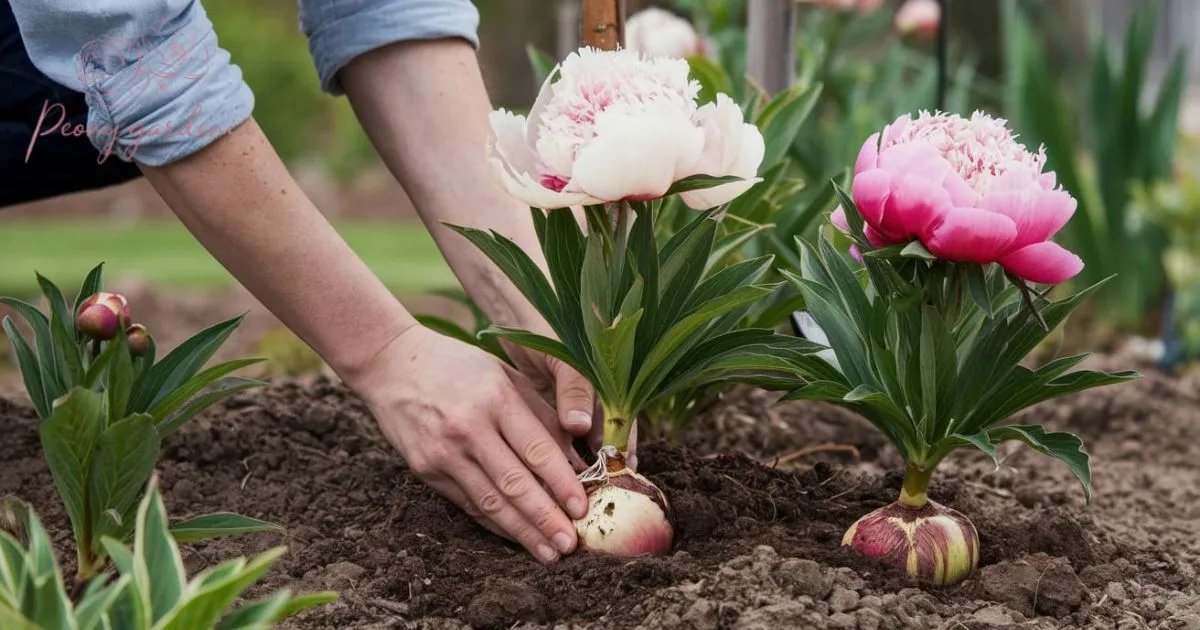Peonies are timeless flowers cherished for their extravagant blooms and sweet fragrance. Known for their resilience and ability to thrive for decades, these perennial plants are a must-have for gardeners aiming to add elegance and color to their outdoor spaces. Growing peonies from bulbs is an enriching process that rewards patience with unmatched beauty.
This guide provides an easy-to-follow approach for cultivating peonies, from selecting the right bulbs to planting, caring, and ensuring their long-term health. Whether you’re new to gardening or a seasoned enthusiast, you’ll find practical tips to enjoy the charm of peonies year after year.
Understanding Peonies and Their Bulbs
Peonies are perennials that belong to the genus Paeonia, prized for their large, fragrant blooms. These flowers can be herbaceous, tree, or intersectional hybrids, each offering unique characteristics. Bulbs, often referred to as tuberous roots in peonies, are the storage units that help the plant regenerate each growing season.
When selecting peony bulbs, it is crucial to choose healthy, firm tubers with at least three to five “eyes.” These eyes are the growth points from which stems and flowers will emerge. Understanding the anatomy of a peony bulb helps ensure proper handling and planting.
Read More: When Is Peony Season
Choosing the Right Location for Planting
Peonies thrive in locations that receive full sunlight, typically at least six hours a day. An ideal site would also provide some afternoon shade in hotter climates to protect the blooms from scorching. Adequate sunlight ensures robust growth and an abundance of flowers.
Soil quality is equally essential. Peonies prefer well-draining, fertile soil with a slightly acidic to neutral pH level, around 6.5 to 7.0. Prepare the site by clearing debris and amending the soil with organic compost or a balanced fertilizer to create a nutrient-rich environment.
Preparing the Soil for Peony Bulbs
Before planting, it’s necessary to loosen the soil to a depth of 12-18 inches. This ensures proper root development and drainage, preventing waterlogging that can cause root rot. Use a garden fork or tiller to aerate the soil thoroughly.
Incorporate organic matter, such as well-rotted manure or peat moss, into the soil. This not only improves fertility but also enhances the soil’s ability to retain moisture without becoming compacted. A well-prepared soil foundation sets the stage for successful peony growth.
Planting Peony Bulbs
Plant peony bulbs in early fall, as this allows them to establish roots before winter dormancy. Dig a hole about 12 inches wide and 2 inches deep, ensuring the eyes of the bulb are facing upward and positioned no deeper than 1-2 inches below the soil surface.
Space the bulbs at least 3 feet apart to give each plant adequate room to grow and spread. After placing the bulb, gently backfill the hole with soil, tamping it lightly to remove air pockets. Water the area thoroughly to help settle the soil and initiate root development.
Caring for Newly Planted Bulbs
Once the bulbs are planted, water them deeply but infrequently. Overwatering can lead to fungal issues, so it’s essential to maintain a balance. A layer of mulch around the planting area helps retain moisture and regulate soil temperature.
Protecting the bulbs during their first winter is vital. Apply a layer of straw or evergreen boughs as insulation, especially in colder regions. Remove this covering in early spring to allow the plants to emerge as temperatures rise.
Providing Ongoing Maintenance
As the peonies grow, regular care is necessary to ensure their health. Water the plants consistently during dry periods, especially in the first year. Avoid wetting the foliage to prevent fungal diseases like botrytis blight.
Fertilize the plants in early spring with a low-nitrogen fertilizer. Reapply fertilizer after the blooming period to replenish nutrients. Avoid over-fertilizing, as this can lead to excessive foliage growth at the expense of flowers.
Staking and Supporting Peony Plants
Peony blooms can become quite heavy, causing the stems to bend or break. To prevent this, install stakes or peony rings around the plants as they grow. These supports will keep the flowers upright and enhance their visual appeal.
Position the stakes early in the growing season to avoid damaging the roots. Ensure the supports are secure but not too tight, allowing the plant to grow naturally without restriction.
Recognizing and Preventing Pests and Diseases
Peonies are generally hardy plants but can be susceptible to pests like aphids and diseases such as powdery mildew. Regularly inspect the foliage and stems for signs of infestation or infection.
To prevent issues, maintain good garden hygiene by removing fallen leaves and debris. Apply an appropriate fungicide or insecticide if necessary, and consider using natural remedies like neem oil for eco-friendly pest control.
Encouraging Blooms and Deadheading
Peonies typically take 2-3 years to produce their first significant blooms, so patience is key. Once the flowers appear, deadhead spent blooms to encourage further flowering and prevent seed production, which can drain the plant’s energy.
Use sharp, clean pruning shears to remove dead flowers just above a healthy leaf node. This keeps the plant tidy and directs its energy toward root and foliage development.
Preparing for Winter Dormancy
At the end of the growing season, cut back the foliage to about 2 inches above the ground. This minimizes the risk of overwintering pests and diseases. Dispose of the cut foliage to keep the garden area clean.
Apply a fresh layer of mulch to insulate the roots during winter. Avoid piling mulch directly onto the crown of the plant, as this can cause rot. Proper winter care ensures the peonies will return strong and healthy in spring.
Dividing and Transplanting Peonies
Peonies can remain in the same spot for many years, but occasionally they may need to be divided or transplanted. This is typically done in early fall, after the foliage has died back. Dig up the root clump carefully and divide it into sections, ensuring each has at least 3-5 eyes.
Replant the divisions promptly, following the same guidelines for spacing and depth. Dividing peonies rejuvenates older plants and provides an opportunity to expand your garden with new blooms.
Conclusion
Growing peonies from bulbs is a delightful journey that rewards gardeners with stunning blooms and a sense of accomplishment. With proper preparation, patience, and consistent care, you can cultivate peonies that will enhance your garden for years to come.
Whether you’re a seasoned gardener or a beginner, these vibrant flowers are a timeless addition to any outdoor space, offering beauty and joy season after season. Embrace the process, and you’ll be rewarded with a lush display of fragrant, colorful flowers that make every effort worthwhile.
FAQs
When is the best time to plant peony bulbs?
Early fall is the ideal time for planting peony bulbs.
How deep should peony bulbs be planted?
Plant bulbs 1-2 inches below the soil surface with eyes facing up.
How long do peonies take to bloom?
Peonies typically take 2-3 years to produce their first significant blooms.
What kind of soil do peonies prefer?
Peonies thrive in well-draining, fertile soil with a pH of 6.5 to 7.0.
How can I protect peonies during winter?
Mulch around the plants to insulate the roots and protect them from frost.









